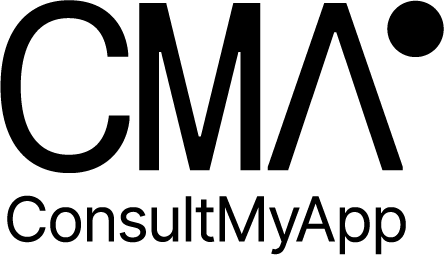App Store Optimization vs SEO
Why you should know about App Store Optimization
There are around 4.5 million apps available across the Apple App Store and Google Play, and more are being launched all the time. With this much competition, you need your app to do more than stand out from the crowd. You need it to jump up and down, grab people by the hand and lead them into the world of possibilities that you’re offering. That’s why you need App Store Optimization (ASO), often seen as the SEO for apps.
But while both work to get you to the top of search results and bring in new users for free, that’s not the full story. We’ve picked out the top six differences that you need to know.
The difference between App Store Optimization and SEO
So what are the key points that differentiate ASO and SEO? Let’s take a closer look at:
Goals
Ranking factors
Optimization
Search intent
KPIs
Impact of paid ads
1. ASO vs SEO: Goals
App Store Optimization is the process of getting your app in front of as many people as possible, then delivering a great first impression with copy and creatives that hit the sweet spot for your audience. Its ultimate goal? To get more downloads for your app.
SEO is the process of getting your web pages to rank highly in search engine results pages (SERPs) by answering questions, solving problems and/or offering unmissable products. The goal here? To get more organic traffic to a website.
2. ASO vs SEO: Ranking factors
ASO ranking factors
Note that there are a few differences between iOS and Android.
Keywords in the app title / name
Keywords in the subtitle (App Store) or short description (Google Play)
Keyword field (App Store) or keywords in the long description (Google Play)
In-app purchases (App Store)
Reviews and ratings
Total number of downloads and download velocity
SEO ranking factors
These are just a few of the key elements considered for websites.
Keywords in the titles and headers
Relevant, engaging and optimised content
Content structure and length
Page loading speed
Domain authority
Click-through rate
3. ASO vs SEO: Optimization
When it comes to app store optimization, there are fairly limited opportunities for apps, largely because a lot of the ranking factors are covered by its details page. This may initially sound negative, but it actually levels the playing field. Every app has the same opportunities to flex their keyword muscles, from the smallest of kitchen-table ventures to the largest of global players.
Conversely, the sky’s the limit for SEO. Because content plays such an important role in the SERPs ranking, you can maximise opportunities to use keywords across titles, text and images throughout your site. So larger websites, or those with bigger budgets for content, may have the upper hand. But again, that’s not the full story. Readable and engaging content will always trump pages that are needlessly stuffed with too many keywords
4. ASO vs SEO: Search Intent
The way people search for apps is different to the way people search for websites – which means you need to adjust your keywords to match.
In-app searches, people tend to look for something specific. So ASO keywords should be short and functional.
With online searches, people usually want information around a particular topic, or a certain product or service. So SEO should include relevant long-tail keywords that anticipate your users’ needs, as part of quality content that answers those queries.
For example, if you run a gym, you could have a fitness app that includes ‘training’ or ‘workouts’ as keywords, while your website could use ‘15 minute HIIT sessions’ or ‘The best post-workout snacks’. If you have a banking app, you could use ‘banking’ or ‘current accounts’ as keywords, along with ‘What to look for in a business account’ or ‘Top tips for regular savings’ for your web content.
5. ASO vs SEO: KPIs
Whether it’s an app or a website, you need to know what’s working and what’s not. Key Performance Indicators (KPIs) are different for each, but their aim is the same: to give you the insight you need to adjust your strategy for the best possible results.
App Store Optimization KPIs can be:
Organic downloads and installs
Conversion rate
Keyword visibility and rankings
Average ratings and reviews score
SEO KPIs can be:
Organic traffic
Conversion rate
Keyword visibility and rankings
Bounce rate
Pages per session
Average session duration
Page load time
Number of backlinks and domains
6. ASO vs SEO: Impact of paid ads
If you’re running a targeted ad campaign that sends people flocking to a website, you may get more sales, but it won’t have a direct effect on the site’s SERPs ranking.
But when you spend on targeted ads for apps, you bring in more users, which leads to more downloads. A higher download velocity increases your app’s ranking, which gets your app in front of more people via organic search. Plus, if more people download your app from organic search, you’ll lower your Cost Per Install (CPI).
Using ASO and SEO together
As you can see, there are plenty of similarities between ASO and SEO: your keywords are likely to come from the same pool, for starters. And there’s crossover: if people like your website, they’ll be easily encouraged to download your app – and vice versa. Or they may come across you by chance – perhaps while searching online for holiday hotels, they may see (and download) your app that helps them find the best local places to visit.
So be aware of the similarities, the way they work in harmony, and their differences. In that way, you can make sure you harness the power of both to build a more successful app.

